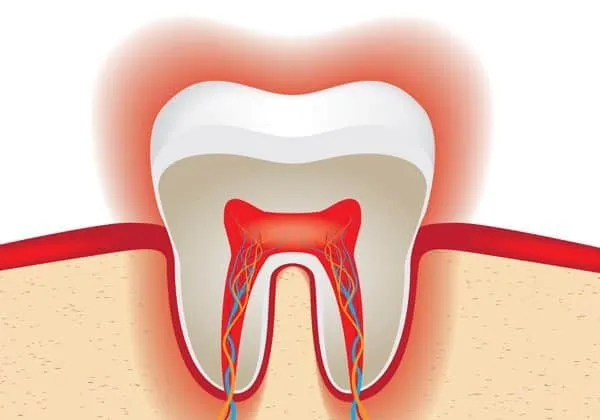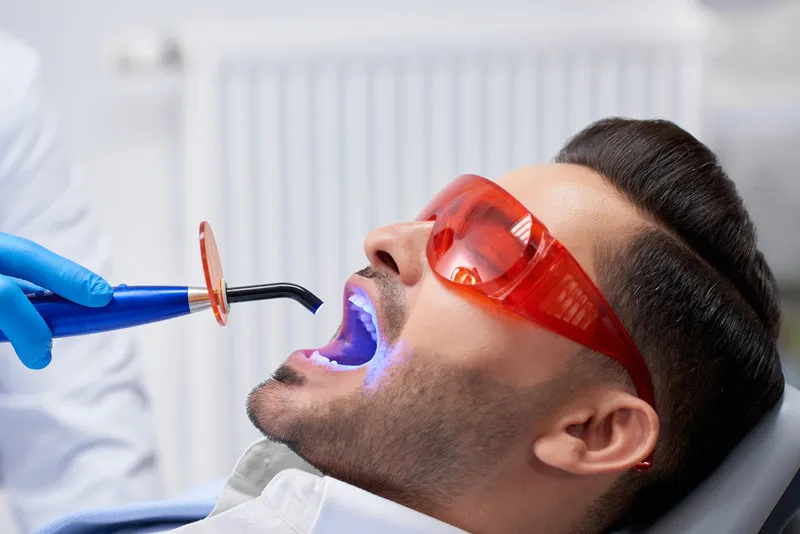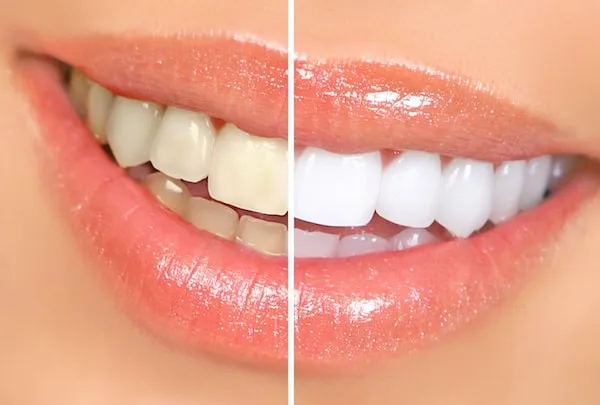What is Teeth Whitening Sensitivity
Teeth whitening is a popular cosmetic procedure designed to brighten your smile. However, a common side effect is tooth sensitivity. This sensitivity occurs when the bleaching agents in whitening products, typically hydrogen peroxide or carbamide peroxide, penetrate the enamel and reach the dentin, the layer beneath the enamel. The dentin contains tiny tubules that lead to the nerves in the pulp of your teeth. When these tubules are exposed, they can become irritated by hot, cold, sweet, or acidic foods and drinks, leading to temporary discomfort. Understanding the causes and how to manage this sensitivity is essential for anyone considering teeth whitening.
Causes of Teeth Whitening Sensitivity
Several factors contribute to the development of teeth sensitivity after whitening. The primary cause is the chemical action of the whitening agents. These agents work by breaking down stain molecules, but this process can also affect the protective enamel layer of your teeth. This can lead to temporary sensitivity, which is usually reversible. The intensity of sensitivity depends on the concentration of the whitening agent, the duration of its use, and the individual’s oral health.
Hydrogen Peroxide Concentration

The concentration of hydrogen peroxide in the whitening product significantly impacts sensitivity. Higher concentrations, often used in professional treatments, tend to cause more sensitivity but also produce faster results. Over-the-counter products generally have lower concentrations, leading to less immediate sensitivity but potentially requiring more applications for the desired whitening effect. The sensitivity level is directly proportional to the concentration, meaning stronger solutions increase the likelihood and severity of sensitivity.
Enamel Erosion
Enamel erosion, the wearing away of the enamel, can exacerbate sensitivity. If your enamel is already thin or damaged due to factors like aggressive brushing, acidic foods, or underlying conditions, the whitening agents can penetrate more easily, causing greater sensitivity. This highlights the importance of maintaining good oral hygiene and consulting with a dentist before starting any teeth whitening procedure to assess the health of your enamel. Proper oral hygiene ensures the tooth enamel is well-protected, reducing the risk of sensitivity.
Gum Recession
Gum recession, where the gums pull away from the teeth, exposing the root surfaces, can also increase sensitivity. The roots of your teeth are not protected by enamel, making them more vulnerable to the effects of whitening agents. This exposure can lead to sharp, intense pain when exposed to hot or cold stimuli. Regular dental checkups can help identify gum recession early, allowing for appropriate management strategies to minimize sensitivity during whitening.
How Long Does Sensitivity Last

The duration of teeth sensitivity after whitening varies from person to person and depends on the whitening method used, the concentration of the bleaching agent, and the individual’s oral health. In most cases, sensitivity is temporary and subsides within a few days to a couple of weeks after the whitening treatment is completed. However, in some cases, it may last longer. Understanding the different types of sensitivity can help manage expectations and choose the most appropriate whitening approach.
Short-Term Sensitivity
Short-term sensitivity is the most common type of discomfort experienced after teeth whitening. It usually starts shortly after the treatment and can last for a few days to a week. This type of sensitivity is often mild and can be managed with over-the-counter pain relievers and sensitivity toothpaste. Avoiding extremely hot or cold foods and drinks during this period can also help minimize discomfort. This short-term sensitivity is a normal response to the whitening process.
Long-Term Sensitivity
In rare cases, sensitivity may persist for several weeks or even months. This long-term sensitivity could be due to pre-existing dental conditions, aggressive whitening treatments, or the use of high-concentration bleaching agents. If sensitivity lasts for more than a few weeks, it is crucial to consult with a dentist. They can assess the underlying cause and recommend appropriate treatments, such as fluoride treatments or desensitizing agents. Persistent sensitivity should not be ignored, as it could indicate a more serious issue.
Managing Teeth Whitening Sensitivity

Several strategies can help manage teeth sensitivity after whitening and minimize discomfort. These strategies focus on reducing exposure to triggers and strengthening the enamel. From changing your oral hygiene to over-the-counter treatments, there are many options to explore. These methods can provide relief and allow you to enjoy your brighter smile without significant discomfort.
Using Sensitivity Toothpaste
Sensitivity toothpaste is specifically designed to block the tubules in the dentin, reducing the transmission of sensations to the nerves. These toothpastes often contain ingredients like potassium nitrate or stannous fluoride. Using sensitivity toothpaste for a couple of weeks before and during the whitening process can help build up a protective barrier and reduce sensitivity. Consistent use is key, as it takes time for the active ingredients to take effect. Switching to a sensitivity toothpaste is one of the first steps to manage discomfort.
Avoiding Acidic Foods and Drinks
Acidic foods and drinks can exacerbate teeth sensitivity by further eroding enamel and irritating the exposed dentin tubules. It’s advisable to avoid or limit the consumption of these items during and immediately after whitening. Common culprits include citrus fruits, sodas, sports drinks, and vinegar-based dressings. Drinking through a straw can also help reduce contact with your teeth. Choosing a balanced diet and being mindful of your food choices can significantly reduce the level of discomfort experienced after teeth whitening.
Professional Treatments

If over-the-counter methods are not sufficient, a dentist can provide professional treatments to alleviate sensitivity. These include fluoride treatments, which strengthen enamel and block dentin tubules, and desensitizing agents applied directly to the teeth. In severe cases, dentists may recommend dental bonding or other restorative procedures to protect exposed dentin. Professional treatment provides effective relief. Regular dental checkups can prevent worsening sensitivity.
Preventing Sensitivity Before Whitening
Proactive measures can be taken to reduce the risk of sensitivity before undergoing teeth whitening. Preparing your teeth and gums beforehand can significantly improve your experience. These preventive strategies are essential for a comfortable and successful whitening process.
Consulting a Dentist
Before starting any teeth whitening treatment, it’s essential to consult with a dentist. They can assess your oral health, identify any pre-existing conditions like cavities or gum disease, and recommend the most appropriate whitening method for your teeth. The dentist will also check for enamel erosion, gum recession, and any other issues that might increase sensitivity. Getting professional advice is the best way to ensure your teeth are ready for whitening. They can also advise on the best ways to manage sensitivity.
Choosing the Right Whitening Method

There are several teeth whitening methods available, including professional in-office treatments, at-home whitening kits, and over-the-counter products like whitening strips and toothpastes. Professional treatments often use higher concentrations of bleaching agents but are applied under controlled conditions, potentially minimizing sensitivity. At-home kits offer a balance of effectiveness and convenience. It is important to choose the method that best suits your needs and sensitivity levels. Discussing options with your dentist will guide your decision.
Following Aftercare Instructions
Following aftercare instructions provided by your dentist or the product manufacturer is critical. These instructions often include recommendations on how to manage sensitivity. Avoiding certain foods and drinks, using sensitivity toothpaste, and maintaining good oral hygiene are crucial steps. Adhering to these guidelines can significantly reduce discomfort and enhance the results of your teeth whitening treatment. Aftercare instructions are your guide to a brighter smile.
Other Considerations
Several other factors can influence the level and duration of teeth sensitivity after whitening. These factors are important to consider when planning a teeth whitening procedure. Understanding these aspects can help you prepare for the process and take the appropriate steps to minimize discomfort.
Age and Sensitivity

Age can play a role in how your teeth react to whitening treatments. Younger people might experience more sensitivity due to having more porous enamel. However, older adults may have other issues like gum recession and thinning enamel. The dentist can assess the condition of your teeth and gums to decide the best whitening approach and manage any potential sensitivity. The dentist’s assessment can help you understand what to expect during the process.
Existing Dental Conditions
Existing dental conditions such as cavities, cracks, or gum disease can increase the likelihood and severity of sensitivity. Whitening agents can seep into these areas, causing greater discomfort. Before whitening, it’s essential to address any existing dental issues. Having these conditions treated will help avoid any unnecessary sensitivity after the process. Your dentist will advise about any necessary treatments before whitening.
The Importance of Proper Whitening
Teeth whitening can dramatically improve your smile, but it’s essential to approach it carefully to minimize sensitivity. By understanding the causes, duration, and management strategies for sensitivity, you can make informed decisions. Consulting with your dentist, choosing the right method, and following aftercare instructions are all crucial steps. With proper care, you can achieve a brighter, more confident smile while keeping your teeth healthy and comfortable. Remember, a healthy and beautiful smile is a worthwhile goal, and with the right approach, you can achieve it without significant discomfort.
